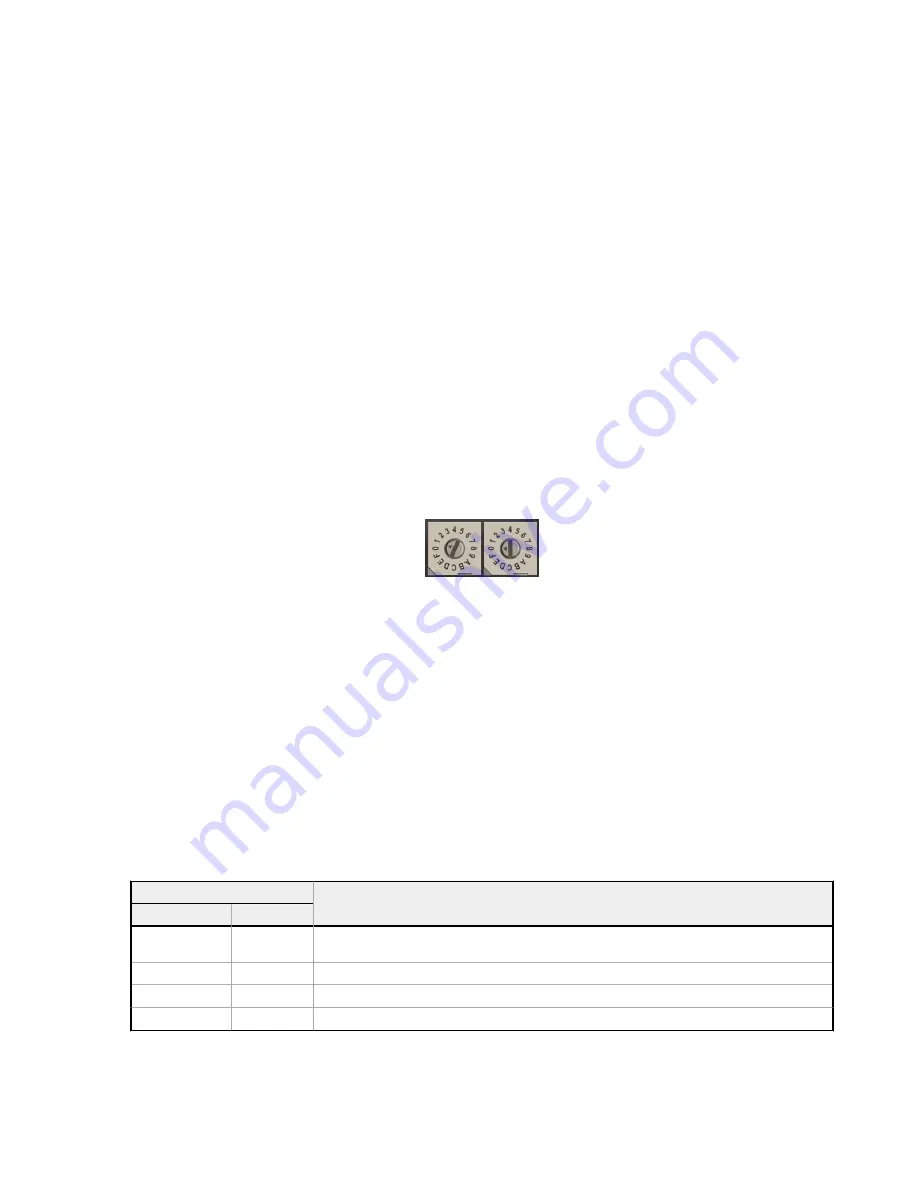
4. On the Gateway, single click button 1 to advance across the menus, stopping at the DVCFG menu.
The Gateway's LCD displays (DVCFG).
5. Single click button 2 to select DVCFG. Single click button 1 to select from the available menu options, stopping at
XADR.
The Gateway's LCD displays (XADR).
6. Single click button 2 to enter XADR mode. When the display reads (AUTO), single click button 2 again to begin the
automatic binding mode.
The LEDs flash alternately when the Gateway is in binding mode. Any Node entering binding mode will bind to this
Gateway. The Gateway's LCD displays NETWRK BINDNG.
7. On the Node: remove the top cover.
8. Move DIP switch 1 to the ON position.
Extended address mode is activated using DIP switch 1.
9. Apply power to the Node.
The Node's LCD displays POWER, then *RUN.
10. On the Node, single click button 1 to advance across the menus, stopping at the DVCFG menu.
The Node's LCD displays (DVCFG).
11. Single click button 2 to enter the DVCFG menu.
12. Single click button 1 to select from the available submenu options, stopping at XADR.
The Node's LCD displays (XADR).
13. Single click button 2 to enter the XADR submenu.
14. When the display reads (AUTO), single click button 2 to begin the automatic binding mode.
The Node enters binding mode. The Node's LCD displays NETWRK BINDNG. When the Node is bound, the LEDs
are both solid red for a few seconds. The Node cycles its power, then enters RUN mode.
15. Use both of the Node’s rotary dials to assign a decimal Node address between 01 and 47.
The left rotary dial represents the tens digit (0–4) and the right dial represents the ones digit (0–9) of the device
address.
16. Repeat steps 7 through 15 for each additional Node that needs to communicate to that Gateway.
17. On the Gateway: single click button 1 or button 2.
When button 1 or 2 is pressed, the Gateway exits binding mode and reboots. The Gateway's LCD displays POWER,
then *RUN.
For devices with batteries integrated into the housing, remove the battery for one minute to cycle power to the device. After
making any changes to DIP switch settings, you must cycle power to the device or the DIP switch changes will not be
recognized.
5.3.2 Bind Radios Using Modbus Commands
Use Modbus commands to bind Nodes to a Gateway when the Node does not have rotary dials.
Apply power to the Gateway and Nodes.
1. Write 0x01
NN
(hex) to the Gateway's register 6371; where
NN
is the Node's ID number in hex.
Value to write to register 6371
Action
Decimal
Hex
256
0x0100
The Gateway enters binding mode and does not assign a Node ID (used with Nodes that get their ID from
the rotary dials).
256
0x0101
The Gateway enters binding mode and assigns the Node that enters binding mode to ID 1
261
0x0105
The Gateway enters binding mode and assigns the Node that enters binding mode to ID 5
291
0x0123
The Gateway enters binding mode and assigns the Node that enters binding mode to ID 35
The LEDs flash alternately when the Gateway is in binding mode.
Sure Cross
®
Performance DX80 Wireless I/O Networks
40
www.bannerengineering.com - Tel: + 1 888 373 6767






























